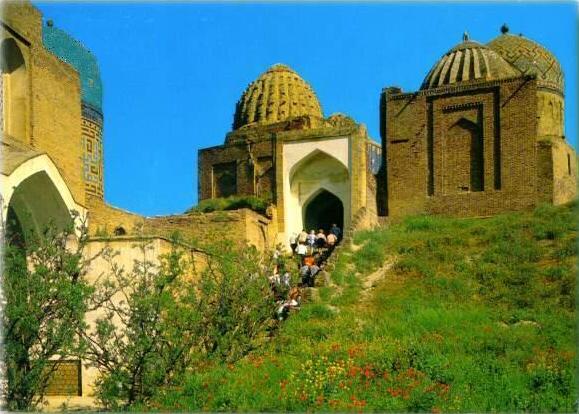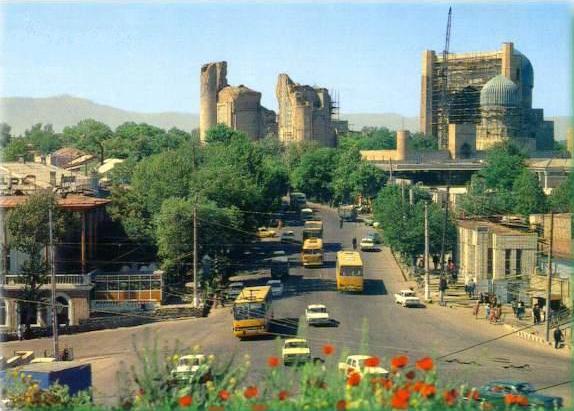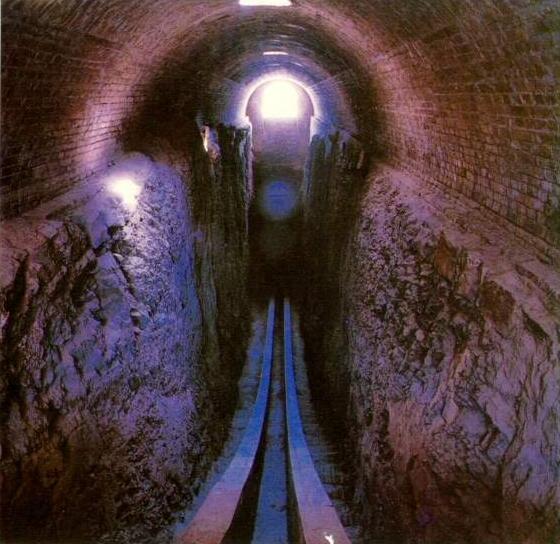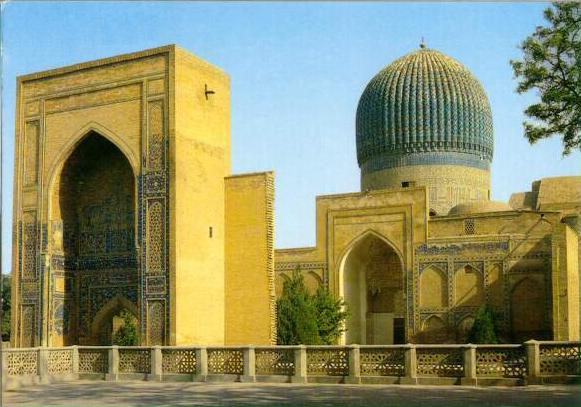The Ulugbek Madrassa ( 1417 –20) on the left is the original,
finished in 1420 under Ulugbek ( who is said to have taught mathematics
here). Beneath the little corner domes where
lecture halls, and at the rear was a large mosque. About 100 students
lived in two storeys of dormitory cells, some of
which are still visible.
This ancient seminary
is appropriately decorated with mosaic of stars
over its enormous pishtak or portico. Every other inch
of its exterior is covered in mosaic too,
using vertually every motif permitted in
Islam art: floral ones sculpted into faience tiles
around the niches and doorways, spirals up the pillars on
the edges of the portico, bands of Kufic calligraphy round
the inside of the iwans (the high vaulted
arches in the middle of each wing) , and geometric patterns
known as girikhs - some of
them amazingly reminiscent of computer
graphics on the minarets and the facade. The minarets
were never used by muezzins; they were said instead
to hold up the sky. The northen one is famous
for its inward lean The other building are imitations by the Shaybanid
Emir Yalangtush. The entrance portal of Shir – Dor
(Tiger) Madrassa, opposite Ulugbek’s
and finished in 1636, is decorated with roaring
tigers, flouting Islamic prohibitions against the depiction of live
animals. In between is the Tillya-Kari (Decorated with Gold) Madrassa,
with a broad mosque courtyard inside.
The hexagonal building in the square’s north-east corner is
a 19th century chorsu or market arcade. On some
summer evenings, there’s Russian, Uzbek, and
English language son et lumiere here. It’s a 10 minute walk from the hotel
Samarkand or Afrosiab. |
|
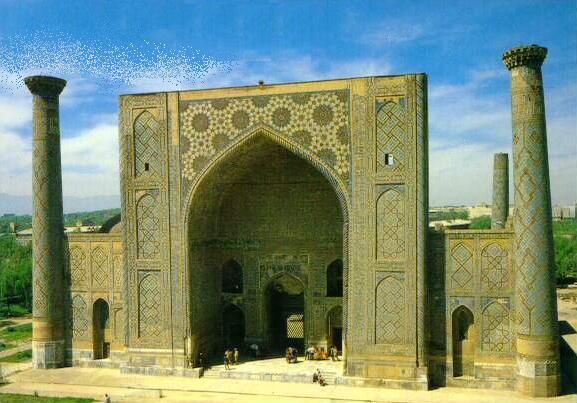
|


